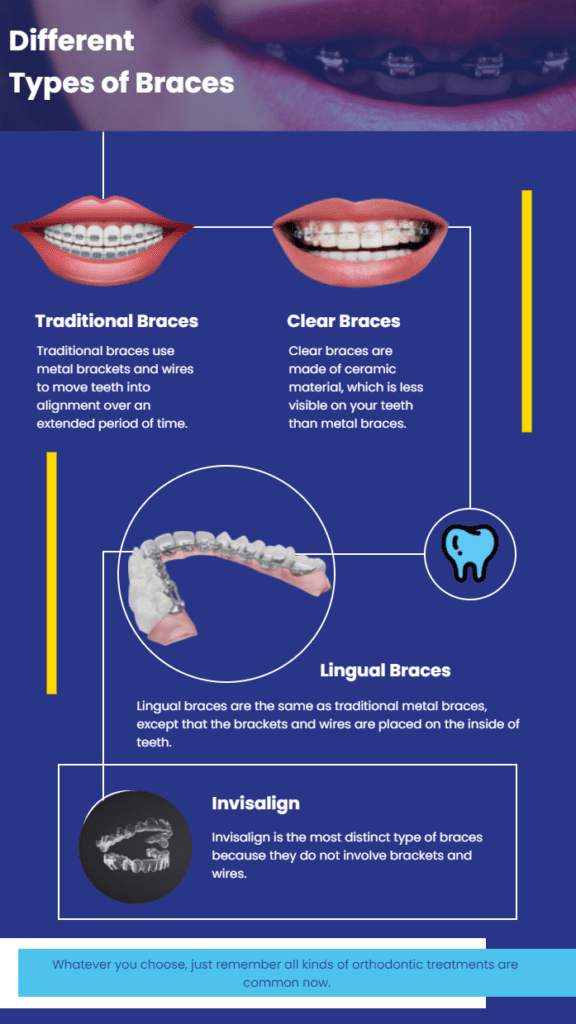Discovering the Right Cumming Orthodontist for Your Braces and Aligners Requirements
Discovering the Right Cumming Orthodontist for Your Braces and Aligners Requirements
Blog Article
Comprehensive Guide to Orthodontics Treatments for Correcting Dental Imbalances
In the world of orthodontics, the trip to accomplishing a flawlessly aligned smile includes a myriad of treatments customized to correct dental imbalances. From conventional dental braces to unseen aligners and even surgical alternatives, the field of orthodontics uses an array of solutions to deal with varying levels of dental abnormalities. Recognizing the ins and outs of each treatment, including their devices, advantages, and potential disadvantages, is crucial in making informed decisions about one's orthodontic treatment. As we navigate through the comprehensive guide to orthodontic procedures for remedying oral imbalances, the elaborate details of each approach will unfold, clarifying the path toward a harmonious and practical dental placement.
Orthodontic Procedures Summary

Routine adjustments and monitoring are vital components of orthodontic therapy to ensure progress is on track and to make any type of necessary modifications along the way. By going through orthodontic procedures, individuals can not just accomplish a straighter grin yet also improve their overall oral health and function.
Conventional Dental Braces: Exactly How They Function
When thinking about orthodontic treatments for oral imbalances, traditional dental braces stick out as a tried and true method for remedying teeth positioning. Typical dental braces consist of brackets, cables, and bands that work with each other to apply continual pressure on the teeth, gradually relocating them into the wanted alignment. The braces are connected to the teeth making use of an unique adhesive, and the cables are threaded via the braces. By adjusting the stress of the cords, orthodontists can manage the instructions and force related to each tooth, directing them right into proper placement over time.
As pressure is applied to the teeth through the braces, the bone surrounding the teeth is improved to sustain the brand-new tooth placements. People will require regular modifications at the orthodontist's workplace to make sure the dental braces proceed to apply the appropriate pressure for reliable teeth movement.
Unnoticeable Aligners: Benefits And Drawbacks
Unnoticeable aligners provide a discreet and convenient choice to standard dental braces for fixing dental misalignments. These clear, personalized trays are basically unseen when put on, making them an attractive choice for individuals looking for an extra visually pleasing orthodontic therapy. Among the key benefits of unnoticeable aligners is their removability, allowing for easier maintenance of oral health contrasted to conventional braces. People can eliminate the aligners before eating or brushing their teeth, reducing the threat of food getting embeded the home appliance and simplifying the cleansing procedure.

Surgical Orthodontic Options
Surgical treatments in orthodontics existing sensible choices for dealing with complicated oral misalignments that may not be successfully solved via standard orthodontic therapies. While unseen aligners and conventional dental braces can deal with several orthodontic issues, certain situations require surgical treatment to attain optimum results. Surgical orthodontic alternatives are normally advised for extreme malocclusions, considerable jaw inconsistencies, and cases where the underlying bone structure needs adjustment to accomplish appropriate alignment.
One common medical orthodontic procedure is orthognathic surgery, which includes repositioning the jaws to correct useful problems such as difficulty talking or eating. This surgical procedure is usually done in collaboration with an orthodontist that assists align the teeth prior to and after the treatment. Surgical orthodontics might likewise entail procedures to expose affected teeth, remove excess periodontal tissue, or improve the jawbone to create a more unified facial account.
Before taking into consideration surgical orthodontic alternatives, clients undertake a detailed assessment to establish the requirement and possible benefits of such treatments. cumming orthodontics. While surgical treatment might seem overwhelming, it can considerably boost both the function and appearances of the smile in cases learn this here now where standard orthodontic treatments drop short
Retainers and Post-Treatment Treatment

Post-treatment treatment involves following the orthodontist's directions faithfully. This might include appropriate dental health practices, attending follow-up appointments, and using the retainers as recommended. Failing to adhere to post-treatment treatment guidelines can cause relapse, where the teeth gradually return towards their original positions. Constant retainer wear, excellent dental hygiene, and regular dental check-ups are important for preserving the results accomplished with orthodontic surgical procedure and ensuring the long-term security of the corrected oral placement.
Verdict
Finally, orthodontic procedures use numerous alternatives for dealing with oral misalignments. Traditional dental braces utilize metal braces and cables to move teeth into proper placement. Undetectable aligners offer a more very discreet option but might not be ideal for all situations. Surgical orthodontic options are available for extra serious imbalances. Retainers are frequently used post-treatment to keep the new alignment. On the whole, orthodontic treatments can effectively boost dental wellness and aesthetic look.
As we browse via the extensive click to find out more guide to orthodontic treatments for correcting oral imbalances, the elaborate information of each approach will unfold, dropping light on the course toward a harmonious and useful oral placement. - cumming braces
One of the most common orthodontic therapies is the usage of braces, which consist of metal braces and cords that use gentle pressure to slowly change teeth right into the desired setting.When taking into consideration orthodontic therapies for oral imbalances, traditional braces stand out as a tried and true method for correcting teeth placing. my review here In addition, invisible aligners may not be suitable for complex orthodontic problems that need even more significant teeth motion, as they are commonly recommended for light to modest situations. Retainers are custom-made orthodontic gadgets developed to hold teeth in their corrected settings after the conclusion of orthodontic treatment.
Report this page